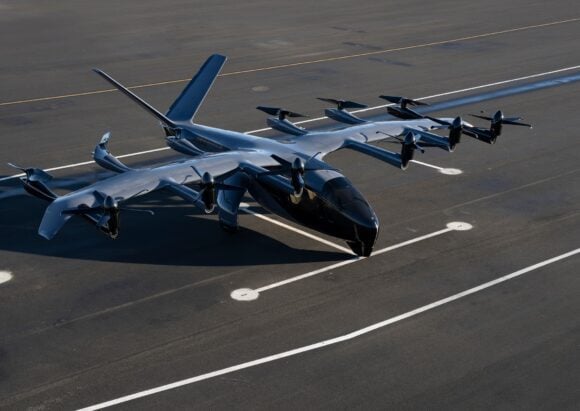
Terrafugia
Flying cars – road-going vehicles that transition to flight – have captured the imaginations of movie makers, designers, and drivers since cars first came to the market. In 1940, Henry Ford predicted there would be a market for flying cars, “Mark my words. A combination of airplane and motorcar is coming. You may smile. But it will come.”
Morgan Stanley forecasts the market for flying cars to be $1.5 trillion by 2040. “Battery technology, processing, and computing power, and advanced composite systems all overlap with eVTOL aircraft manufacturing” are cited as making flying cars a reality.
Airinsight-UAM defines a flying car as a vehicle that you can park in your garage, take to the streets, and then lift off and fly to the final destination. While part of Urban Air Mobility (UAM) market, flying cars are distinct because they are being designed for personal use, as opposed to air taxi or air shuttle service.
Today, there are several flying cars in development. The Toyota Skydive, Terrafugia Transitions, AeroMobil, Samson Switchblade, and the CFC AirCar that meet the Airinsight-UAM definition.
Toyota announced plans to use its Skydrive flying car at the opening ceremony of the 2020 Tokyo Olympics. The 2018 Toyota patent shows a vehicle that is built for city streets as well as the air. The flying car will fly at 33 feet above the ground at speeds of up to 62 mph. Toyota calls it a ‘Dual Mode Vehicle with Wheel Rotors.’ This means that the rotors of the VTOL themselves are actually built into the wheels of the car. When the vehicle is on the streets, the rotors of the VTOL fold into the interior of the wheel rim itself.
When the Skydive transitions to ‘land mode’, the arms with the rotors on each end lower down and simultaneously rotate so that the wheels sit on either side of the vehicle, like a car. Once the car is in land mode, it drives with ‘tank controls’. The wheels can only rotate forward or backward as they do on the front axle of a car. This is because unlike conventional cars, Toyota’s proposed Skydive would not have an axle.
Volvo and Lotus parent company Geely bought USA-based company Terrafugia. The Terrafugia Transition is a two-passenger roadable aircraft that transitions to flight. The Transition, featured in 2012 at the New York International Auto Show, offers a “transformers”-like transition from car to aircraft that takes less than a minute. But rather than a car with wings, Terrafugia thinks of the Transition as a street-legal airplane. It’s designed to take advantage of the network of small airports scattered across the United States. The idea is for pilots to fly into small airports — assuming the runway is at least 1,400 feet long — and drive to their final destinations, or land and take to the highway.
The AeroMobil is roadable 4-passenger aircraft from Bratislava, Slovakia. The vehicle cis designed to transform into flight mode in less than 3 minutes. As a car, it has a top speed of 100 mph (160 kph) and can drive for 434 miles (700 km). When in the air, the vehicle is designed to fly for 466 miles (750 km) and reach a top speed of 223 mph (360 kph) when in the air. The vehicle is certified to operate in Europe and AeroMobil plans to eventually seek FAA certification in the U.S. The price tag is $1.3 million and $1.6 million.
Samson Switchblade is a two-passenger roadable aircraft developed in Oregon. The Switchblade is a three-wheel, street legal vehicle that you drive from your garage to a nearby local airport. Once there, the wings swing out and the tail extends in less than 3 minutes. The vehicle is designed to be certified as a kit- experimental aircraft. The Switchblade’s air speeds are up to 200 mph and 13,000 feet. Once landed, the vehicle transforms back to driving mode – the wings safely stowed and protected – and can continue onto the street to the final destination. It is being designed as a build-it-yourself kit with an expected price of $120,000.
The CFC AirCar is retrofitting the two-passenger Volonte Flying Car designed, built and flown by K.P. Rice. The Volonte received an experimental certificate from the FAA in 2002 and flew between 2002 and 2003. Stephen Cook in Utah moved the Volonte to literally his garage to begin retrofitting with new engine and cockpit. The Volonte has a street-car fuselage, that trailers the wings to an airport, where the wings are attached for take-off. The aircraft is designed to fly at 150 mph but has not flown since 2003. Cook hopes to get it back flying next year.
According to Morgan Stanley, “The impact of flying cars would only be limited by imagination.” Time will tell if personal flying cars will eventually be in every garage.
Views: 1



